Jordan’s eastern wilderness stretches toward Iraq and Saudi Arabia like a sea of stone and silence, broken by architectural marvels that seem to mock the harsh environment around them. The Umayyad caliphs who ruled the Islamic world over 1,300 years ago built these desert palaces as statements of power and sophistication, proving that wealth and engineering skills could create luxury even in the most unforgiving landscapes.
These buildings create a distinctive architectural synthesis that shaped Middle Eastern design for generations to come by fusing Byzantine grandeur with Persian creativity and early Islamic innovation. Here is a list of 17 Jordanian desert castles and oases where ancient engineering continues to defy environmental logic.
Qasr Amra
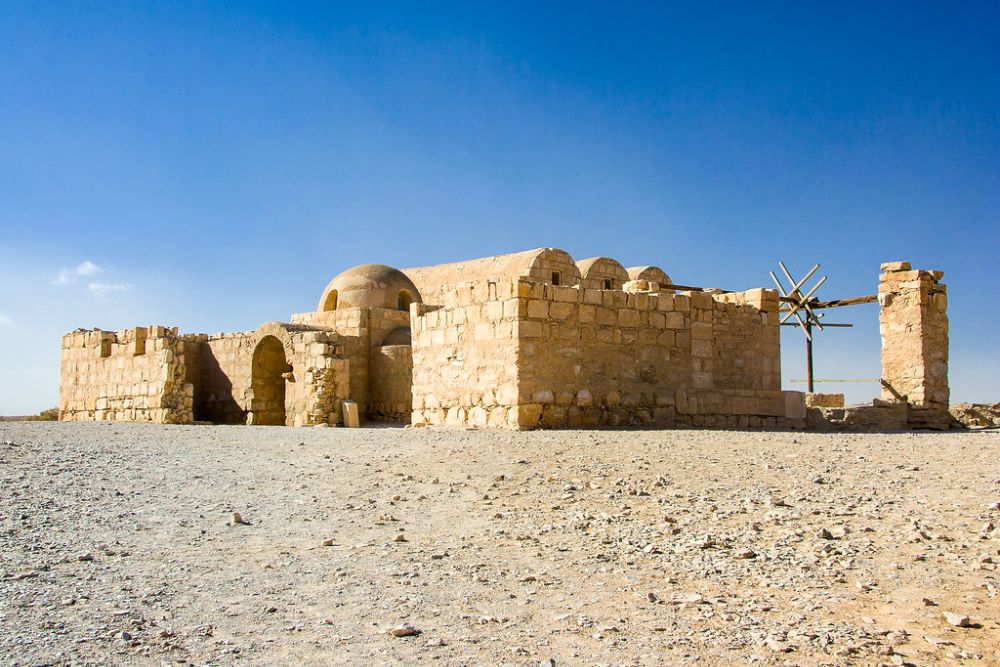
This UNESCO World Heritage bathhouse preserves frescoes that would scandalize conservative Islamic scholars today, with hunting scenes, zodiac symbols, and royal portraits covering every interior surface in a riot of color and controversy. The three-room bathing complex operated through an ingenious hypocaust heating system that channeled hot air beneath stone floors—Roman technology adapted for Islamic luxury in the middle of nowhere.
Eighth-century artists painted naked figures and wine-drinking scenes that reflect the Umayyad period’s relaxed approach to religious restrictions, back when earthly pleasures didn’t automatically contradict spiritual devotion. The famous ceiling fresco maps the northern hemisphere’s constellations with remarkable accuracy, suggesting this desert retreat attracted astronomers alongside pleasure-seekers.
Qasr al-Khurana
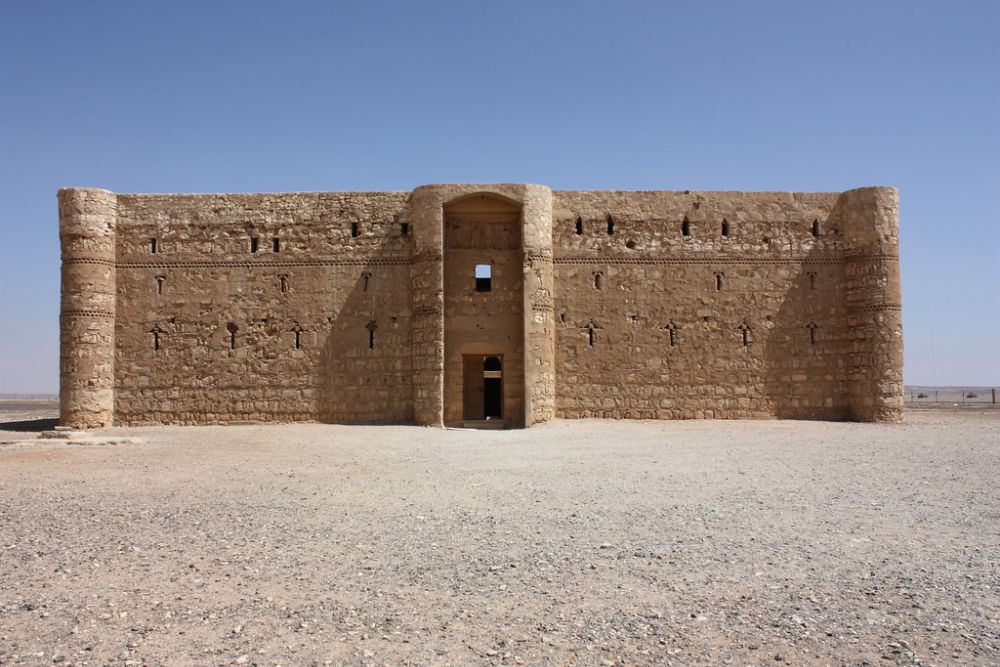
Standing in Jordan’s eastern desert like a miniature fortress, this two-story palace demonstrates how Umayyad builders created architectural sophistication in locations that seem almost uninhabitable today. The structure’s 60 rooms surround a central courtyard where travelers once gathered around fountains supplied by underground cisterns that collected precious rainwater.
Archaeological evidence suggests multiple functions—caravan rest stop, hunting lodge, and diplomatic meeting place where Bedouin tribal politics played out over elaborate feasts served on imported Chinese porcelain. The building’s defensive appearance masks its true purpose as a luxury retreat where desert rulers could escape Damascus while maintaining their grip on regional power networks.
Like Travel Pug’s content? Follow us on MSN.
Qasr al-Azraq
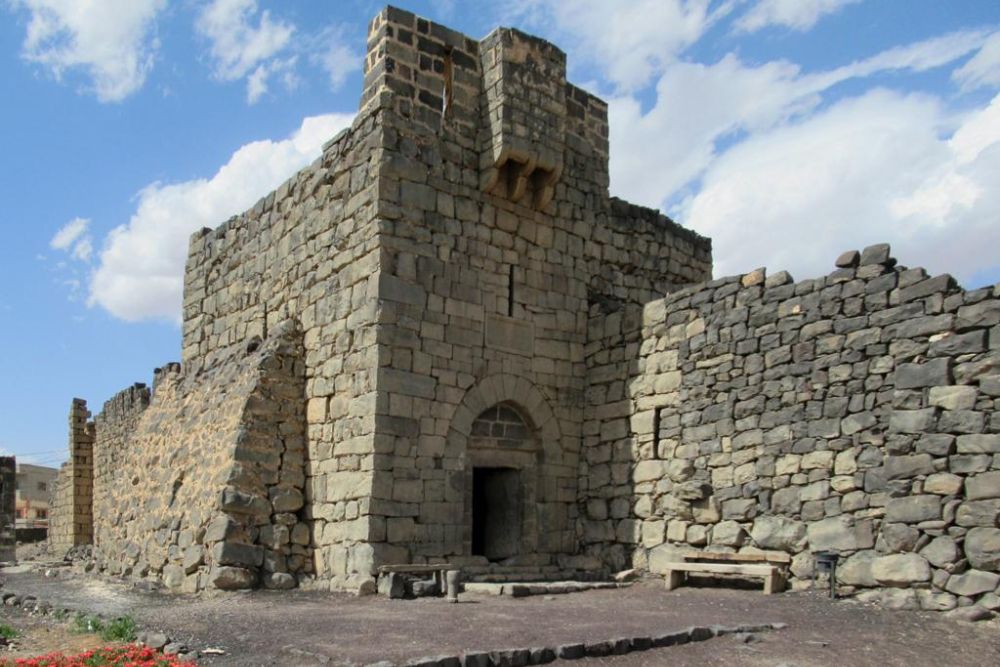
Lawrence of Arabia chose this black basalt fortress as his headquarters during the Arab Revolt, though the structure’s military importance stretches back through Roman, Byzantine, and Umayyad periods of continuous occupation. The castle controls the Azraq Oasis, where freshwater springs have sustained human settlement for millennia in this otherwise waterless landscape.
Massive stone blocks fitted without mortar create walls that have survived desert storms and military sieges across multiple civilizations, proving that skilled engineering trumps elaborate decoration in harsh environments. The fortress’s most impressive feature remains its enormous entrance door, carved from a single basalt slab that requires three men to open, but swings on ancient hinges with surprising ease.
Qasr al-Hallabat
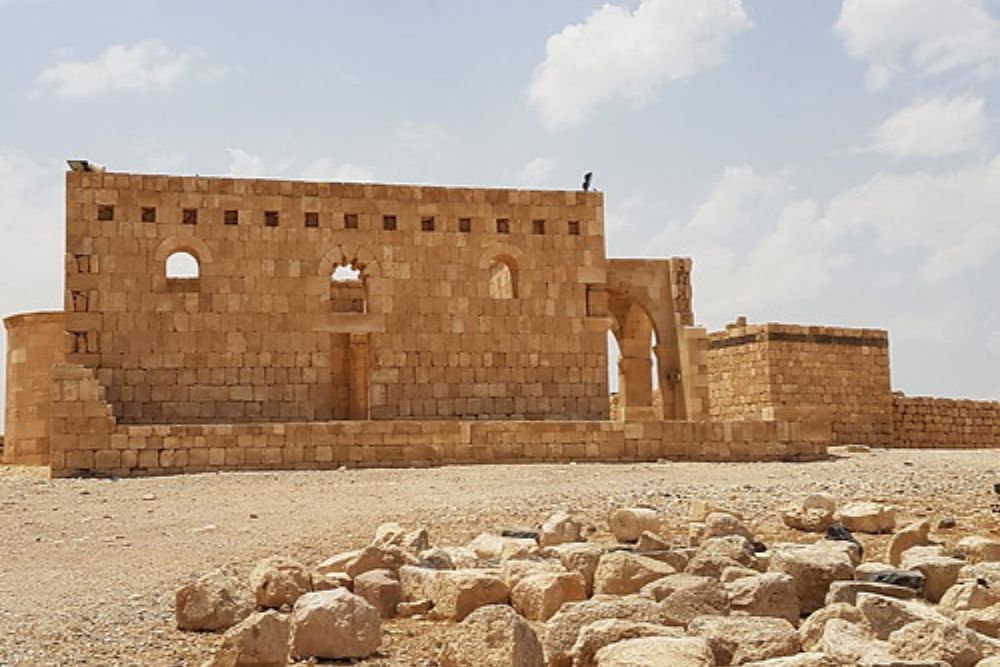
This complex began as a Roman fort before Umayyad rulers transformed it into an elaborate palace surrounded by agricultural estates that demonstrated how irrigation could make the desert bloom. The site includes a mosque, bathhouse, reservoir, and defensive walls that enclosed gardens where imported fruit trees thrived under careful cultivation.
Byzantine mosaics discovered on palace floors reveal the luxury and artistic sophistication of early Islamic court life, while agricultural terraces show how desert rulers combined military power with agricultural innovation. The castle’s water management systems include sophisticated qanat channels that brought mountain streams across miles of arid terrain to sustain this unlikely oasis.
Qasr al-Mushatta
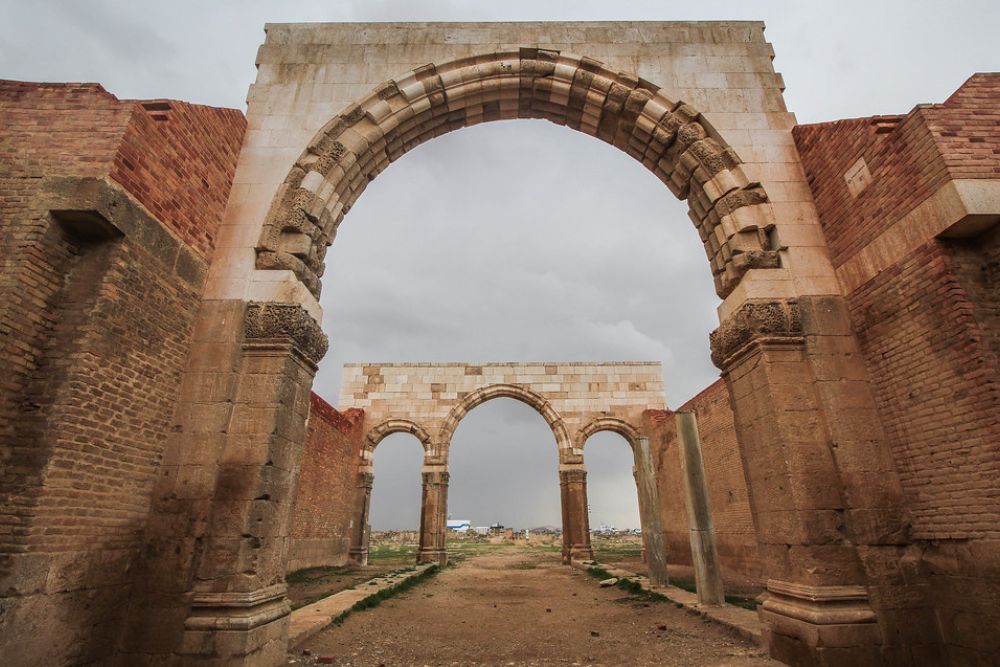
Never completed due to the revolution that overthrew the Umayyads, this palace represents Islamic architectural ambition at its most grandiose and unrealistic. The massive structure would have covered nearly 400,000 square feet when finished, with elaborate stone facades featuring geometric and botanical carvings that rival anything produced in Damascus or Baghdad.
German archaeologists removed sections of the decorated facade to Berlin’s museums in the early 1900s, where they remain as testimony to Umayyad artistic achievement and European archaeological enthusiasm. The palace’s unfinished state provides unique insights into 8th-century construction techniques, revealing how builders planned to support massive stone vaults in an environment where timber was scarce and expensive.
Like Travel Pug’s content? Follow us on MSN.
Qasr al-Tuba
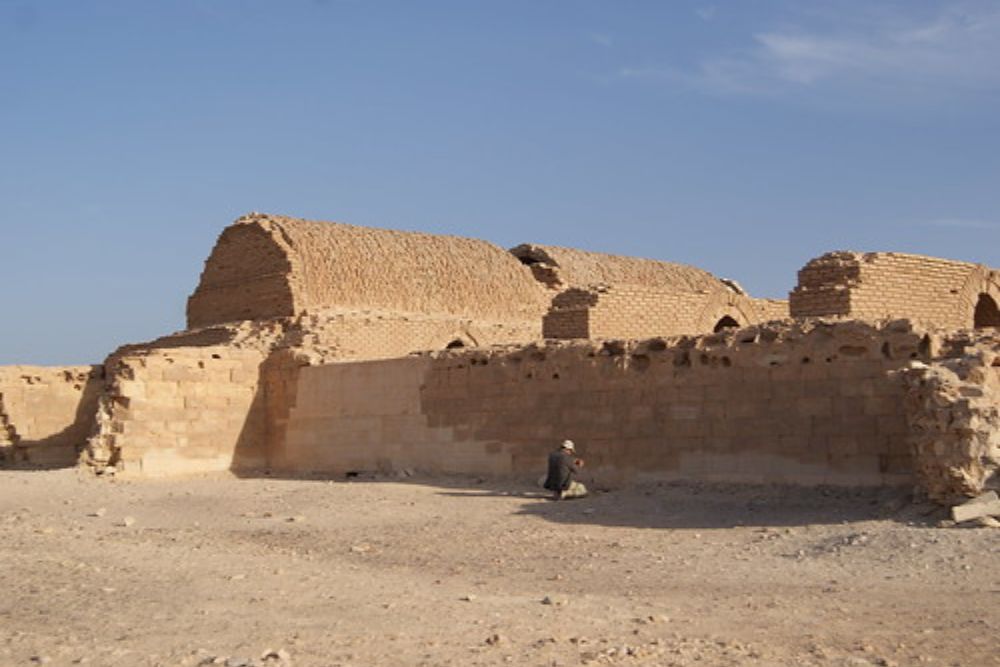
This isolated palace sits 65 miles southeast of Amman in terrain so remote that many professional archaeologists have never managed to visit the site. The two-story structure includes living quarters, reception halls, and service areas arranged around courtyards designed to provide relief from desert heat through natural ventilation systems.
Elaborate stone carving decorates doorways and window frames, proving that distance from urban centers didn’t reduce Umayyad standards for architectural excellence. The castle’s water supply relies on multiple cisterns and channels engineered to capture and store rare rainfall, creating a survival system that sustains luxury living indefinitely if properly maintained.
Qasr Burqu
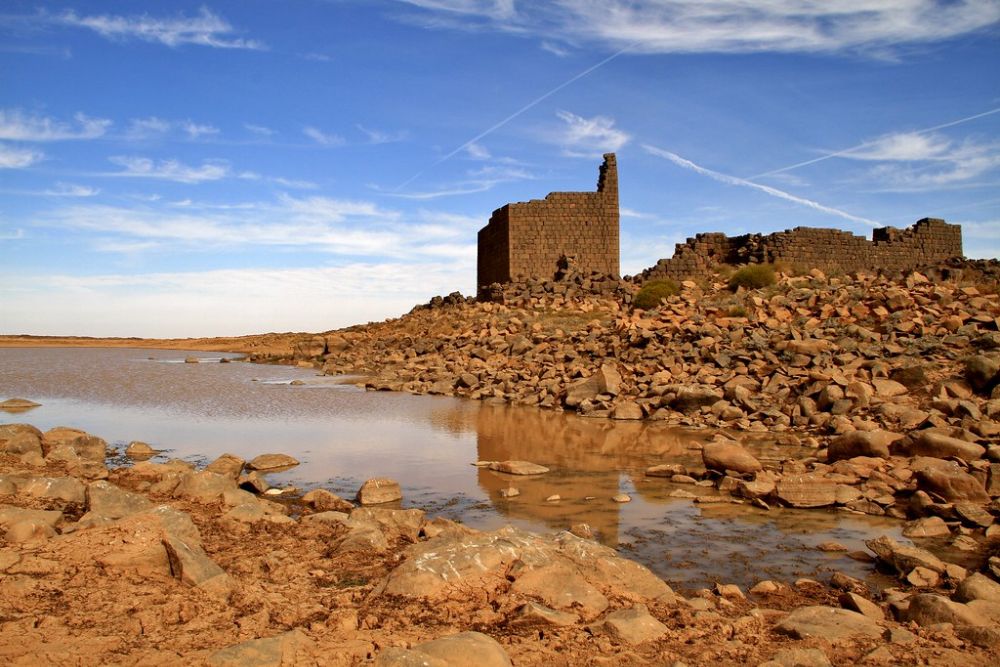
Built around natural springs in Jordan’s northeastern desert, this compact fort controlled trade routes linking Syria with the Arabian Peninsula across some of the region’s most challenging terrain. The strategic location near permanent water made it valuable to Roman legions, Byzantine tax collectors, and Umayyad administrators who needed secure stopping points for official travelers.
Archaeological layers reveal continuous occupation from the 3rd through 8th centuries, with each civilization adapting the fortress to contemporary military requirements while maintaining access to the precious water source. Surrounding petroglyphs and ancient hunting traps demonstrate thousands of years of human activity around this rare desert oasis.
Qasr Usaykhim
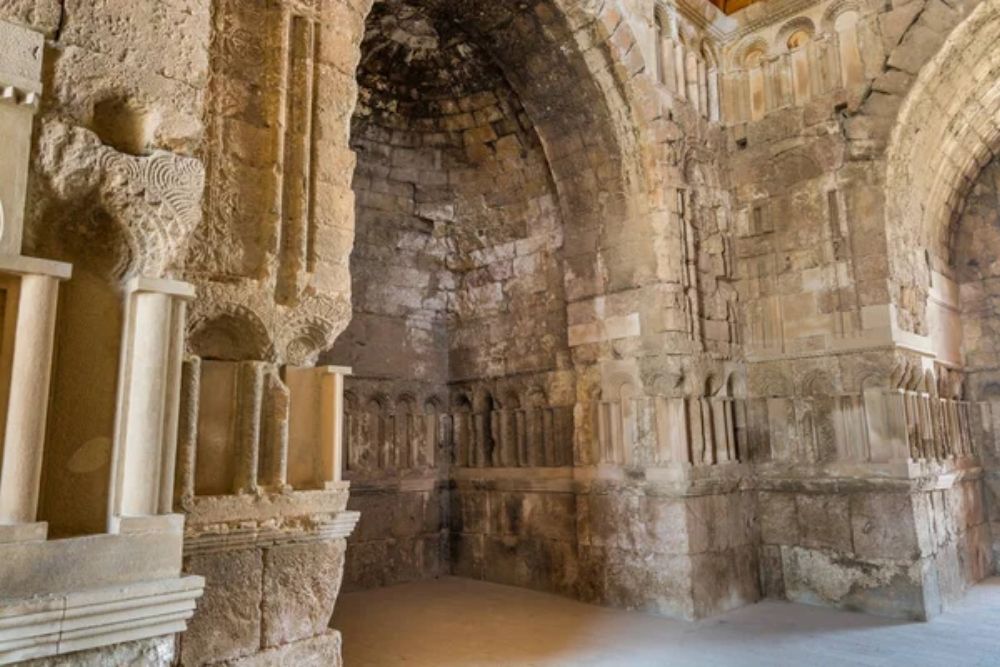
This lesser-known castle near the Saudi border requires four-wheel-drive vehicles and experienced guides to reach, preserving it from casual visitors while challenging serious archaeology enthusiasts. The compact structure suggests it housed a regional administrator or tribal leader allied with the Umayyad government, someone important enough to warrant a fortified residence but not significant enough to merit elaborate decoration.
Dark volcanic stone gives the walls their distinctive color while helping the structure blend into the surrounding basalt landscape—camouflage that may have been intentional. Recent surveys have identified extensive water collection systems around the castle, including channels that direct flash flood water into underground storage chambers.
Like Travel Pug’s content? Follow us on MSN.
Qasr al-Muwaqqar

Located closer to Amman than most desert castles, this site combines palace architecture with agricultural installations that support a thriving permanent settlement. The complex includes residential quarters, administrative buildings, and workshops connected by covered walkways that provide shade during the scorching summer months.
Stone irrigation channels distributed spring water to terraced gardens where palace residents cultivated vegetables and fruit trees using techniques adapted from Persian and Byzantine agricultural traditions. The site’s relative accessibility has attracted local visitors for generations, though tourism development now threatens archaeological features that have survived since the 8th century.
Qasr Hammam al-Sarah
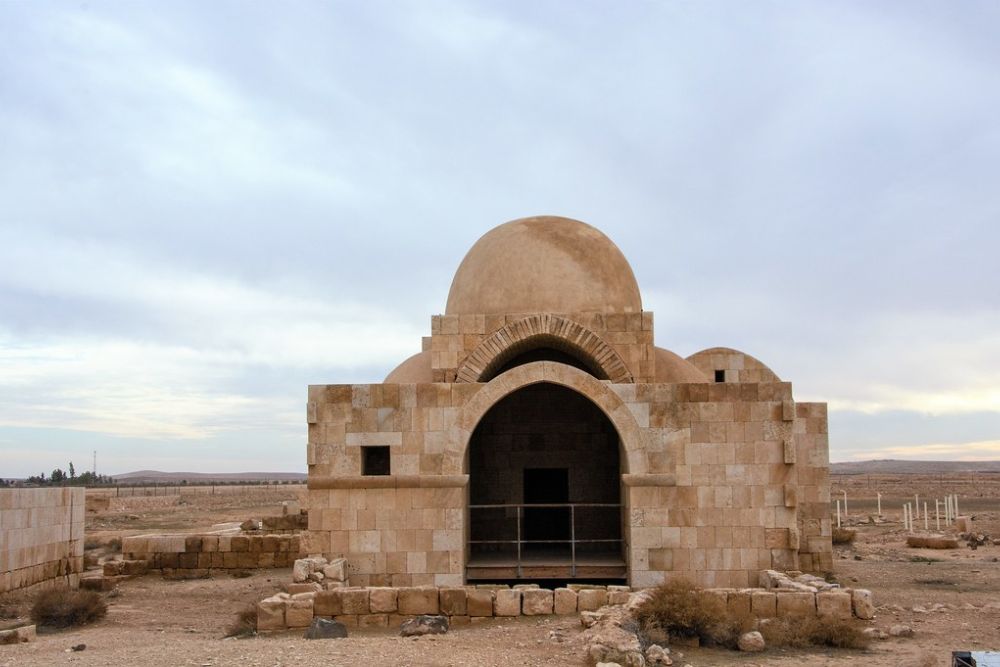
This bathhouse complex showcases Umayyad hydraulic engineering at its most sophisticated, channeling natural hot springs through multiple pools designed for therapeutic bathing rather than simple washing. The three main rooms follow Roman thermae design principles, creating a progression from cool to warm to hot water treatments that promote both physical health and social interaction.
Natural geothermal activity eliminated the need for artificial heating systems used at other desert bathhouses, reducing operational costs while providing more consistent water temperatures. Surrounding ruins suggest a much larger palace complex that archaeological teams continue excavating despite funding challenges and political instability.
Qasr al-Uwaynat
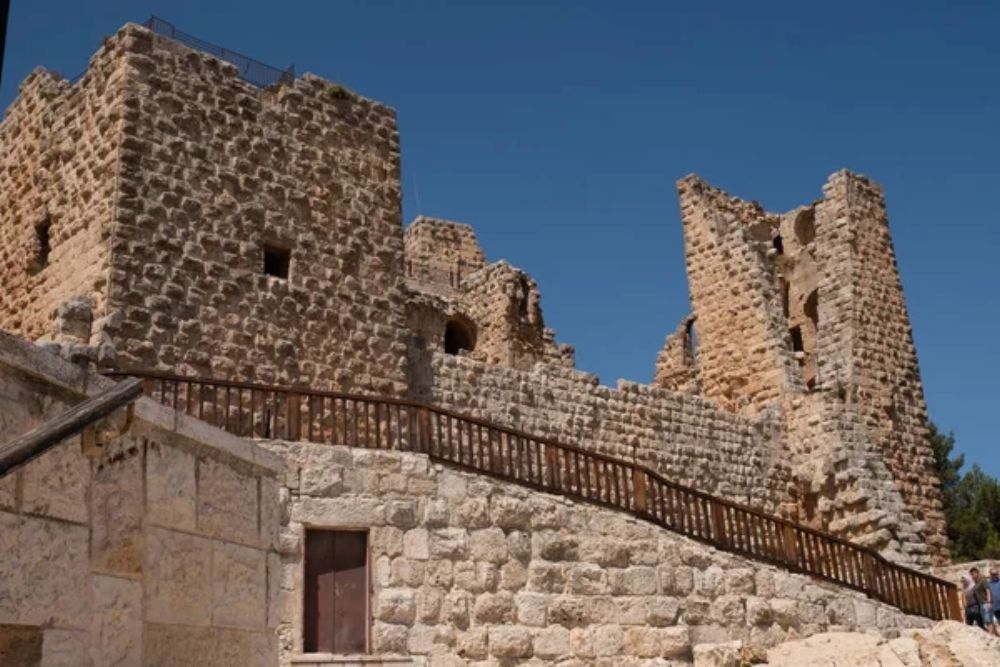
Twin castles at this remote site indicate the location’s importance as a crossroads where multiple ancient trade routes converged during the early Islamic period. The larger structure appears designed for residential use, while the smaller building may have housed security personnel, servants, or visiting merchants who needed temporary accommodation.
Stone foundations extending beyond visible ruins suggest a much larger complex that included stables, workshops, and storage facilities essential for supporting caravan traffic. The position near seasonal water sources made this an essential stop for traders crossing between Jordan’s agricultural regions and Arabian Peninsula markets.
Like Travel Pug’s content? Follow us on MSN.
Qasr Daba
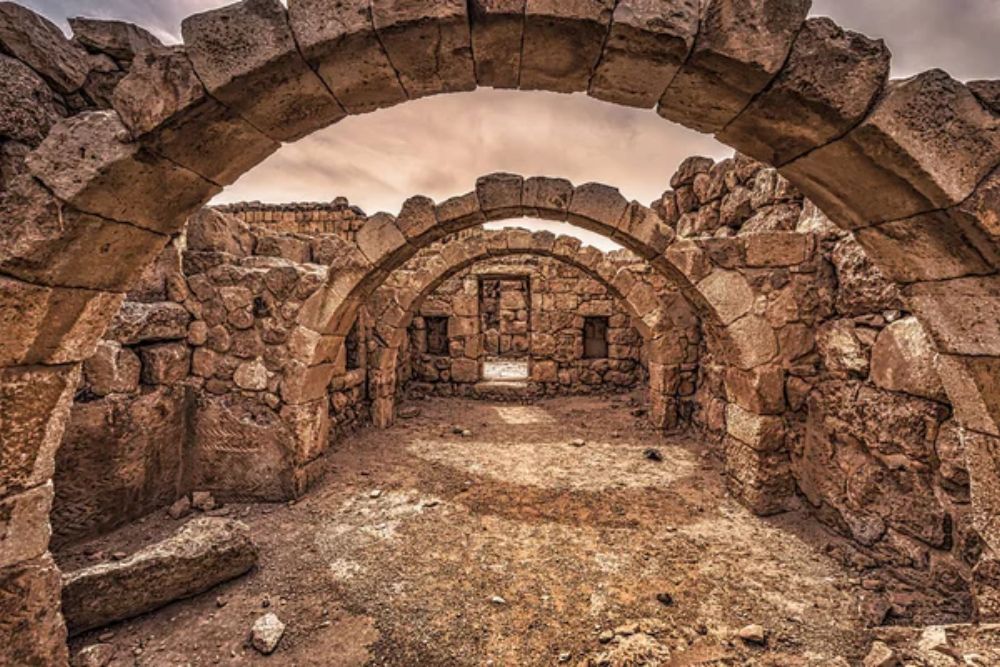
This remote fortress guards a strategic mountain pass where ancient trade routes descended from Jordan’s eastern highlands toward the Mesopotamian plains. The castle’s elevated position commands views across miles of desert terrain, allowing defenders to spot approaching travelers long before they could pose any threat to the installation.
Massive stone walls incorporate natural rock formations in construction techniques that make fortifications appear to grow directly from the landscape rather than being imposed upon it. Archaeological evidence indicates continuous occupation from the Roman through early Islamic periods, with each civilization adapting defenses to meet contemporary military challenges.
Qasr Jiza

Recent excavations have revealed one of Jordan’s most complex desert palace layouts, with residential, administrative, and ceremonial areas connected by covered corridors that provide protection from desert sun and sandstorms. The sophisticated water management system includes multiple cisterns, settling tanks, and distribution channels that supply fountains and gardens throughout the sprawling complex.
Stone carvings discovered during archaeological work display Persian Sassanian influence, which is unusual among Jordanian desert castles, suggesting cultural connections reaching far beyond the immediate region. The palace’s isolated location has protected it from vandalism and unauthorized excavation, preserving architectural details lost at more accessible historical sites.
Qasr Asaykhim al-Wustani
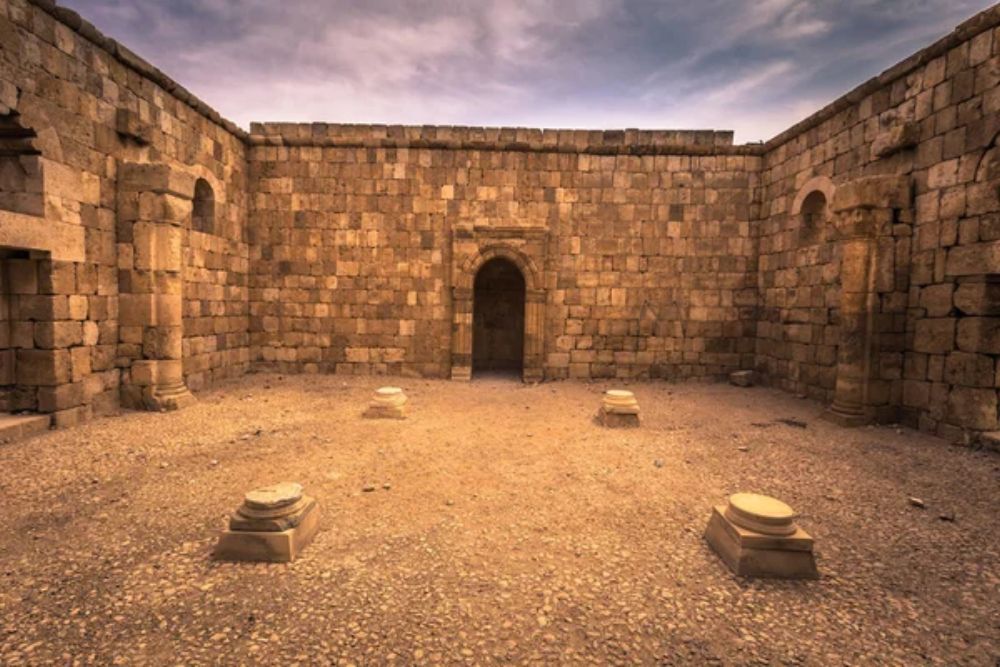
This central fortress, in a cluster of three desert installations, controlled access to water sources essential for crossing Jordan’s eastern wilderness safely. The structure emphasizes defensive capabilities over residential comfort, with thick walls, narrow windows, and elevated fighting positions designed to repel determined attackers.
Underground chambers beneath the main building stored water, food supplies, and valuables during sieges or extended periods of isolation when supply convoys couldn’t reach the remote location. The castle’s strategic importance continued into Ottoman times when Turkish administrators used it as a tax collection point for nomadic Bedouin tribes.
Like Travel Pug’s content? Follow us on MSN.
Qasr al-Kharrana East
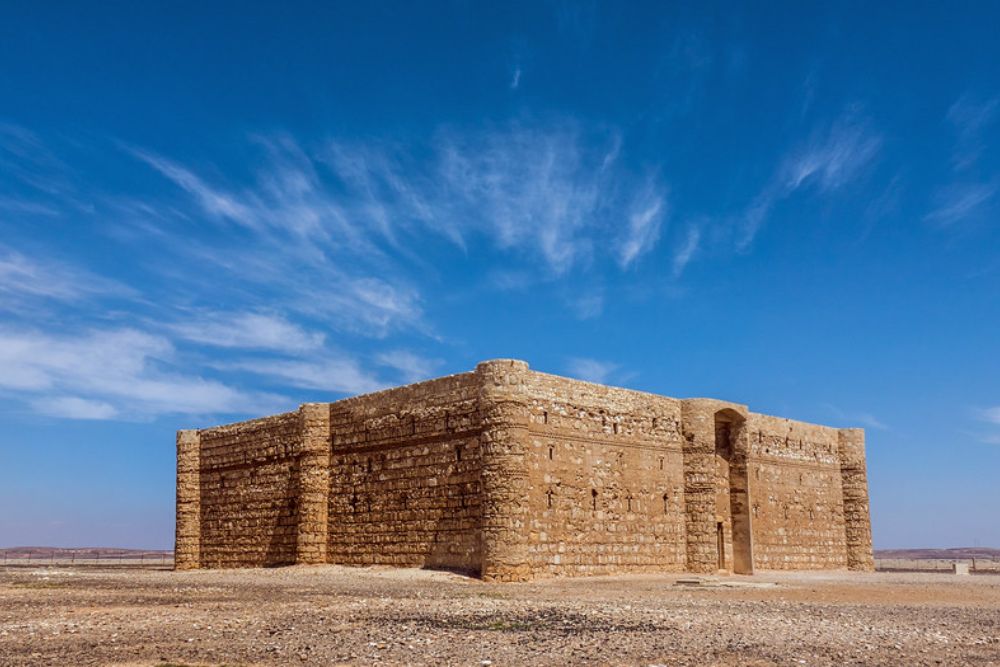
Distinguished from its more famous western neighbor, this castle shows how Umayyad architects adapted standard palace designs to meet specific environmental and functional requirements in challenging desert locations. The structure’s careful orientation maximizes natural ventilation while minimizing exposure to prevailing winds that carry sand and dust into living spaces throughout the year.
Interior room arrangements suggest seasonal residential use, where officials could escape Damascus’s oppressive summer heat while maintaining their administrative responsibilities through messenger networks. Recent conservation efforts have revealed traces of original plaster and paint that provide insights into 8th-century interior decoration preferences.
Qasr Shabib
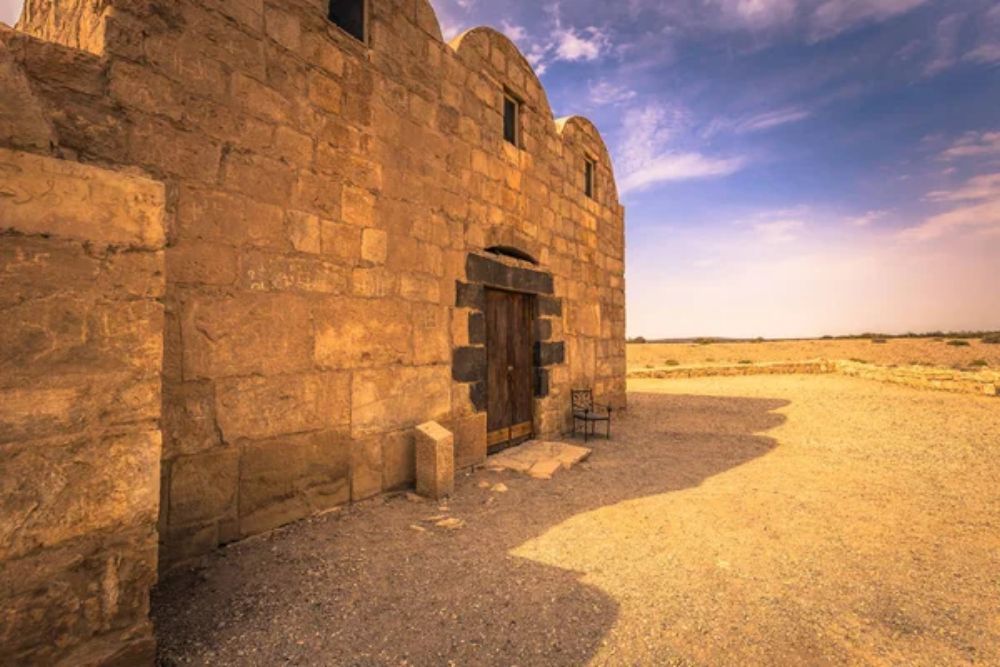
This fortress complex includes defensive walls enclosing an area large enough to shelter entire merchant caravans during sandstorms or periods of military conflict in the region. The central keep rises three stories above surrounding structures, providing observation posts and secure storage for valuable trade goods that justified the expense of maintaining such remote installations.
Stone-lined wells within the fortress ensure water supplies during extended sieges, while underground passages connect different sections of the complex for secure movement during attacks. Archaeological layers reveal continuous occupation from Nabataean through Islamic periods, making this one of Jordan’s most historically significant desert sites.
Qasr al-Qastal
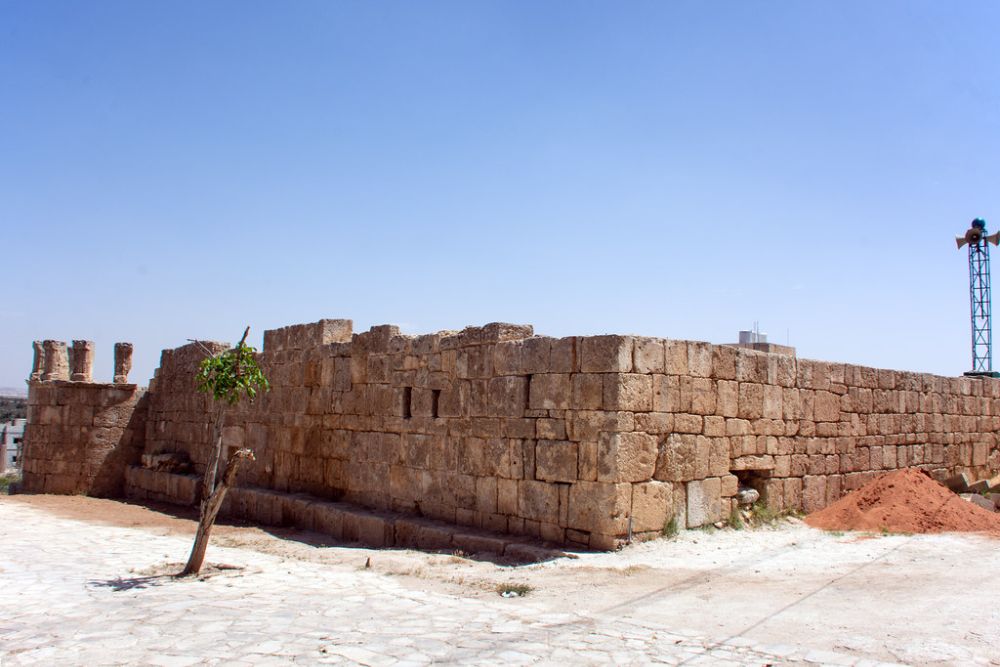
The southernmost major desert castle sits near ancient caravan routes that connected the Hejaz railway with traditional pilgrimage paths leading toward Mecca. The structure combines residential and commercial functions, with ground-floor spaces accommodating merchant goods and upper levels reserved for administrative or ceremonial activities.
The castle’s water system includes an innovative fog-catching mechanism that condenses moisture from cool night air, supplementing conventional rainfall collection methods in this extremely arid environment. Archaeological surveys around the site have identified extensive agricultural terraces that supported permanent farming communities despite challenging desert conditions.
Like Travel Pug’s content? Follow us on MSN.
Desert Palaces Against Time
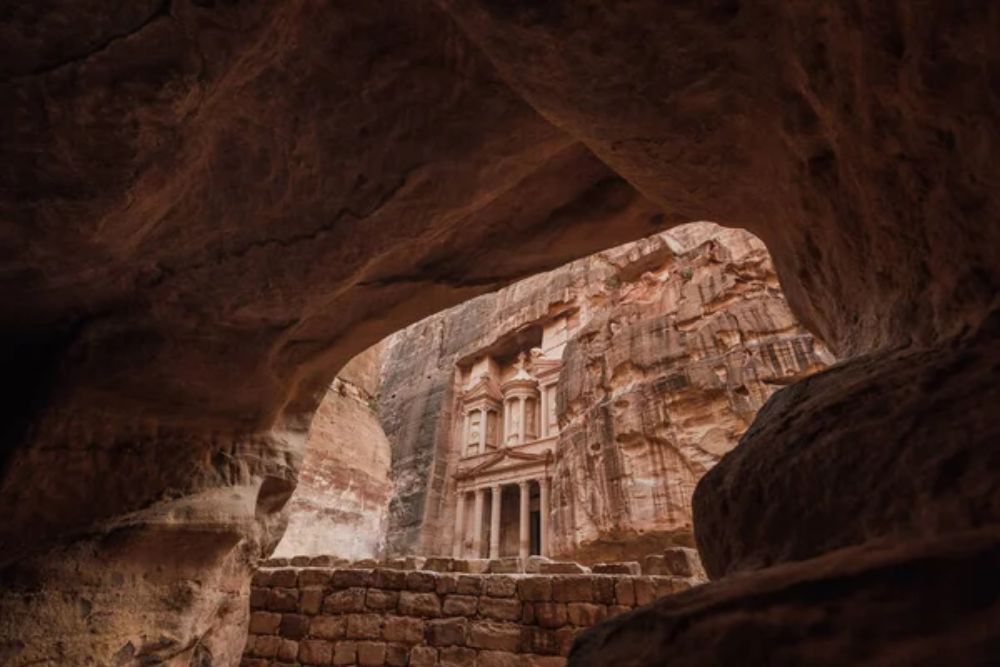
These Jordanian desert castles prove that 8th-century architects could conquer seemingly impossible environmental challenges through innovative engineering combined with unlimited ambition and resources. Each structure tells different stories about the Umayyad civilization’s complexity, from pleasure palaces celebrating earthly delights to frontier fortresses maintaining imperial control over vast territories.
The castles’ survival across thirteen centuries demonstrates both the durability of their construction techniques and the wisdom of builders who understood how to work with rather than against their harsh environment. Modern visitors to these remote archaeological treasures experience the same sense of wonder that must have struck ancient travelers discovering magnificent architecture thriving in the heart of an unforgiving wilderness.
More from Travel Pug

- 20 Best Beach Towns in the Carolinas
- 13 Destinations Where Tourists Regularly Regret Their Trip
- 20 Things You Actually Get in First Class
- 20 Small Airports With Aviation Museums
- 20 Places in the U.S. That Are Perfect for a Reset Trip
Like Travel Pug’s content? Follow us on MSN.
